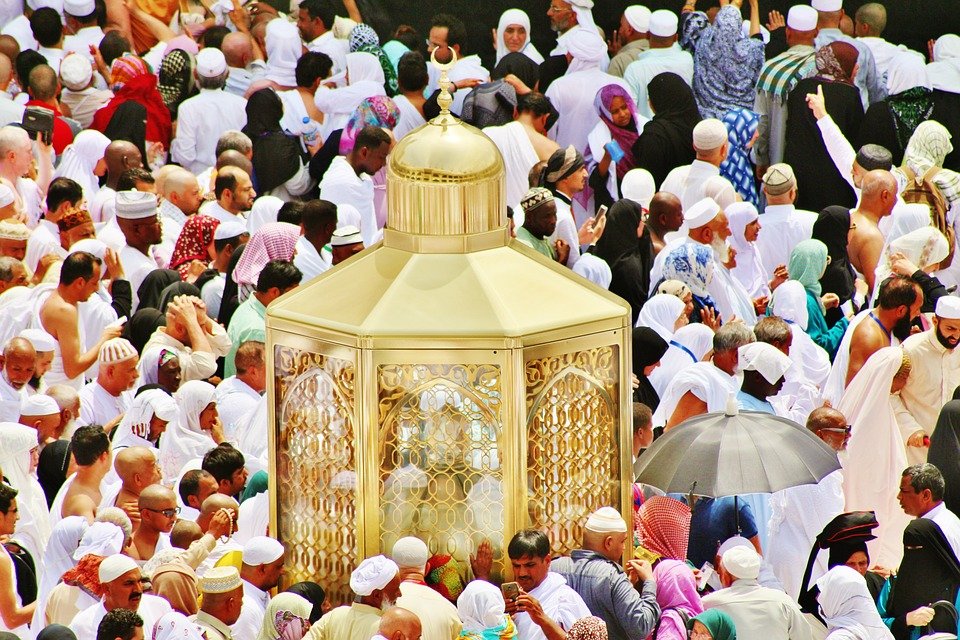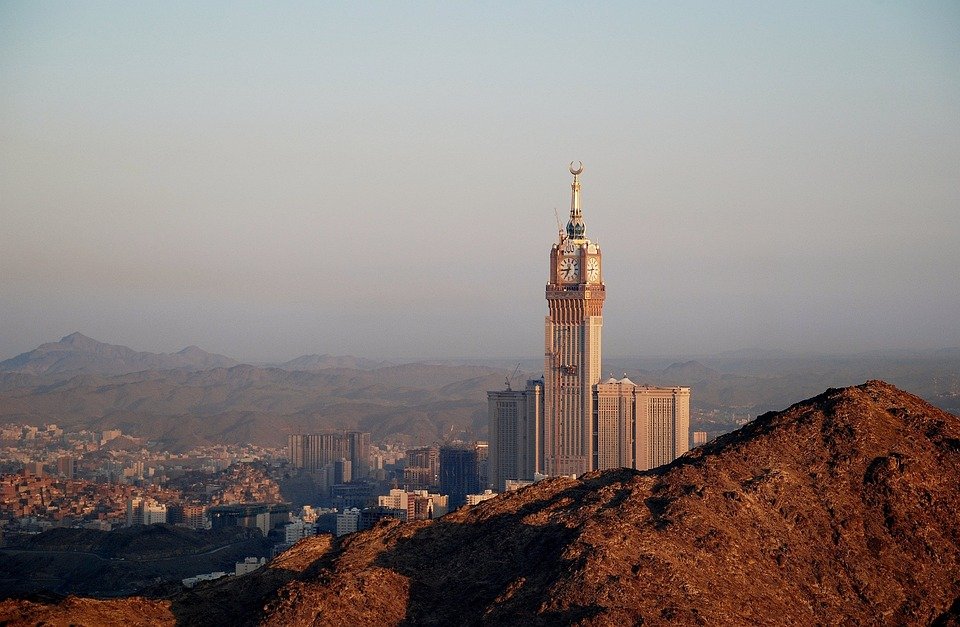You are here to read: Should Eid Be After Hajj? Understanding the Significance – A Thoughtfully Written Guide Offering Spiritual Wisdom and Travel Advice for Every Pilgrim who is going on holy journey of Hajj or Umrah.
When discussing whether Eid should be after Hajj, many factors come into play that warrant thoughtful consideration. This topic—”Should Eid Be After Hajj?”—holds significant importance for millions of Muslims around the world. In this article, I promise to provide you with a comprehensive guide that explores the implications and traditions surrounding this question. As we look into the customs and perspectives, you will gain valuable insights into the reason behind the timing of these sacred events.
The significance of understanding “Should Eid Be After Hajj?” cannot be overstated, especially given the profound impact that these religious occasions have on Muslim communities worldwide. With over nine years of experience in the travel field related to Umrah and visits to Makkah and Madinah since 2016, we are well-equipped to guide you through the nuances of this discussion. I feel it’s essential to appreciate how these events shape our spirituality and community, and I believe exploring this topic requires both respect and knowledge. Join us as we dive into the meaning and implications of aligning Eid with Hajj observances.
Understanding Hajj and Eid al-Adha
Hajj is one of the most significant religious observances in Islam. Every year, millions of Muslims travel to Makkah to perform this holy pilgrimage. Hajj takes place during the Islamic month of Dhu al-Hijjah. It’s a time filled with rituals, prayers, and moments of deep reflection. When Muslims participate in Hajj, they embrace their faith and unite with others from all around the globe.
On the other hand, Eid al-Adha, also known as the Festival of Sacrifice, follows Hajj. This celebration honors the willingness of Prophet Ibrahim to sacrifice his son as an act of obedience to God. Muslims mark this occasion by performing prayers, sharing meals, and giving to those in need. The connection between Hajj and Eid al-Adha is powerful and meaningful, showcasing themes of faith, sacrifice, and community.
The Spiritual Link Between Hajj and Eid
In my opinion, there’s a profound connection between Hajj and Eid al-Adha that enriches the religious experience for Muslims. After completing Hajj, the feelings of spirituality and devotion often blossom. Eid al-Adha acts as a completion of this sacred period, allowing believers to celebrate the commitment shown during Hajj.
During Eid, families gather to pray and share meals, reinforcing community ties. The rituals of sacrifice, which symbolize giving and gratitude, echo the lessons learned during the pilgrimage. Both events honor faith and recognize the importance of family and friends in our lives. I think this interconnectedness magnifies the significance of both occasions.
Why Some Suggest Eid Should Be After Hajj
Many people propose that Eid should directly follow Hajj, mainly because the sentiments from the pilgrimage are fresh and vibrant. This idea suggests that the festival of Eid could serve as an immediate acknowledgment of the sacrifices made during Hajj. After the intense spiritual journey of Hajj, Eid would feel like a well-deserved celebration, showcasing joy and gratitude.
You're at the middle of this awesome post at AirlinkHajjandUmrah.com through: Should Eid Be After Hajj? Understanding the Significance. Keep reading, it gets better!
However, others may argue that having Eid after Hajj already strengthens the link between the two occasions. It allows Muslims to reflect on their experiences during the pilgrimage. In my opinion, this reflection adds depth to the celebrations, enhancing appreciation for both Hajj and Eid. Each person’s perspective sheds light on how closely intertwined these two holy events are.
Cultural Perspectives on Eid and Hajj
Different cultures around the world celebrate Eid in unique ways. This diversity showcases the beauty of Islamic traditions and highlights how occasions like Eid can bring people together. In many countries, large gatherings feature traditional foods, music, and vibrant decorations. These celebrations often create an atmosphere of joy and appreciation, emphasizing community spirit.
For instance, in some nations, families may dress in their finest attire and share meals with neighbors. While others might choose to volunteer and give back to the underprivileged. The essence of these traditions underscores the core message of both Hajj and Eid: compassion, generosity, and unity. Personally, I feel that these cultural variations can bring new richness to the overall experience of Eid.
The Timing of Eid and Its Importance
Eid al-Adha is celebrated on the tenth day of Dhu al-Hijjah, following the end of Hajj. This timing is significant because it marks a turning point, transitioning from intense spirituality during the pilgrimage to a celebration of completion and community. Observing Eid in this manner reminds Muslims of the need to be thankful for their experiences and the blessings they have received.
The festival encourages collective gratitude and a sense of fulfillment. In my view, this timing reinforces the significance of both occasions. It reminds us that life is about balance: the dedication shown during Hajj must be matched by appreciation during Eid. This relationship between the two acts as an anchor, connecting believers to their faith and each other.
Emotional Reflections During Eid Post-Hajj
After the intense emotions of Hajj, Eid provides a time for reflection. Many pilgrims find joy in sharing stories of their experiences with family and friends. It becomes a moment to relive the challenges and breakthroughs they faced during the pilgrimage. By discussing these experiences during Eid, people can deepen their understanding of each other’s faith journeys.
These exchanges transform the atmosphere of celebration into one of warmth and togetherness. I think sharing personal stories helps bridge connections between generations, ensuring that the lessons of Hajj remain alive. It creates rich conversations that remind us of the values we hold dear as a community.
Conclusion: The Significance of Timing in Faith
In conclusion, the relationship between Hajj and Eid al-Adha is deeply meaningful. Although some may argue that Eid should come right after Hajj, the current timing offers a chance for reflection, gratitude, and celebration. This connection emphasizes fundamental values—obligation, sacrifice, and community involvement.
Whether one celebrates or reflects, the essence remains the same: connecting to our faith and each other. I believe this connection is what makes our collective experiences as Muslims so special. So, whatever your take on the timing of Eid, let’s carry the spirit of both occasions in our hearts and actions long after the celebrations are over.
That wraps up Should Eid Be After Hajj? Understanding the Significance. Thanks for sticking with us till here! Share this: Should Eid Be After Hajj? Understanding the Significance with your friends.
Check our homepage at Air Link Hajj & Umrah for more awesome updates.
Some interesting posts are: 1: Umrah Mubarak, 2: When is Umrah closed 2026?, 3: When does Umrah start after Hajj 2026?
Mushu, an experienced Saudi Arabia traveler and writer, shares insightful tips and spiritual reflections to enhance Hajj and Umrah journeys for fellow pilgrims. He has been to Makkah and Madina from 2016 to 2023 many times and his posts will reflect this.







